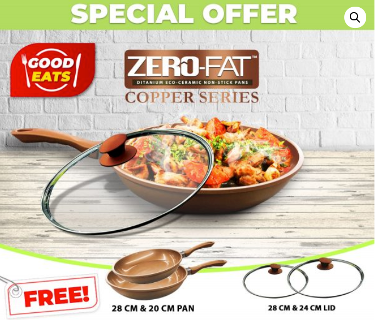6 Simple Ways To Make Your Product Descriptions Sell

Bringing people to your website and to check out your products or services is only half the battle. They come into your page to take a look at something they’re interested in, but there’s another step that is between them and your Add To Cart button, and that’s copywriting.
Copywriting, or more specifically, well-written copywriting, is important because it serves the function of answering questions in your prospect’s mind. It’s also a tool to enhance their interest in your product.
One E-commerce study found that 20% of purchase failures are potentially a result of missing or unclear product information.
Why wouldn’t you use a tool that drives profitability and achieves your business goals?
The Importance of Product Descriptions
Here’s one example:

This graphic post captivates the eye, but it’s not enough to make a sale.

This on the other hand is everything the client would want to follow. Notice how the customer is immediately led to the heading “WHY YOU NEED IT”? Then off the copywriting goes.
In this stage, it’s a matter of letting the copywriting do the work for you, because you can’t chat with your viewers. It’s not rocket science to figure out how important Copywriting is.
With that, let us get to the tips!
1. Envision your Customer
This one’s pretty obvious. You need to figure out how to talk to your customers regarding the product you sell. Are you selling food products? Be as casual as you can! Take a look at how food companies communicate on their social media.
2. Keep it to your product’s benefits
When your customer comes into a specific page, there’s only so far that conversational content can take you. The main focus is “benefit”.
You already have memorized your product back and forth, and what you need to do is help the customer see your product as you see it. That’s why it’s generally a good rule to apply a conversational style if you can.
The buyer is only focused on how it can benefit them, whether it’s functional or gives a social appeal. Remember to focus that the consumer is not focused on technological features and facts. They’re interested in what’s in it for them and how they can improve their lives.
3. Leverage the purpose behind the product
Another piece of the pie is a story. In a world that competitors say the same thing, what will make you stand out? Isn’t it the reason behind all of it?
Having an emotional connection influences both buyer behavior and branding greatly! Saying what you are and why you do what you do, along with consideration as to how your product fits in your customer’s life is basically a friendship being built; think about it.
By including a story and a sense of purpose to your product, you will connect with the potential buyers on an emotional level rather than a transactional one. This is key to converting your potential buyers into actual buyers.
4. Talk With Tonality
Tonality is relevant when it comes to describing your product and saying your story.
If you sell gadgets, you might want to consider talking more about specifications and looping in your consumer’s lifestyle and how your product bridges convenience and access for them.
It’s important to always consider how you should be talking to your ideal customer because it’s an element to the whole branding process.
5. Use Power Words
Regardless of the tonality you have set for your buyers, there must be something “striking” about it. These words normally induce an emotional response that should make you in the eyes of your customers.
Be mindful of the ideal words that you can tell your consumer, and you can more easily convince your customers to take the leap and make the purchase.
Jon Morrow at Smart Blogger describes these as “power words.” He has an entire list of words that can help make your product copy more enticing.
As you write your product descriptions, look for any descriptive words or adjectives that could use a little bit of dressing up. Rather than using words like “nice” or “high-quality”, opt for power words like “stunning” or “sensational”.
6. Make your words easily readable
The last thing you want your copywriting to look like is a formal study.
When you can, use words that are clear and simple, offering more room for a connection between you and your customer to be made.
It can even be argued that talking casually in an e-commerce situation is the best way to sell your product, and why wouldn’t it?
“Dumbing down your message isn’t dumb” -Entrepreneur


